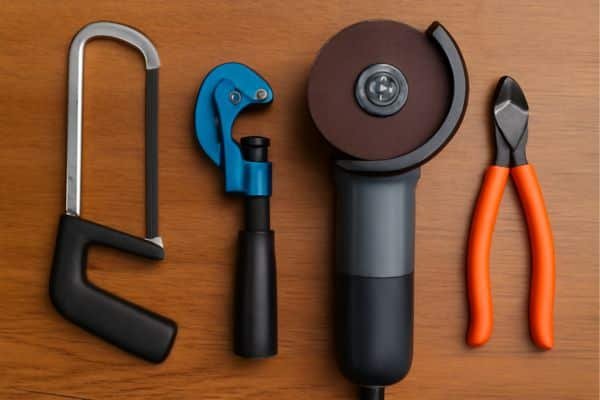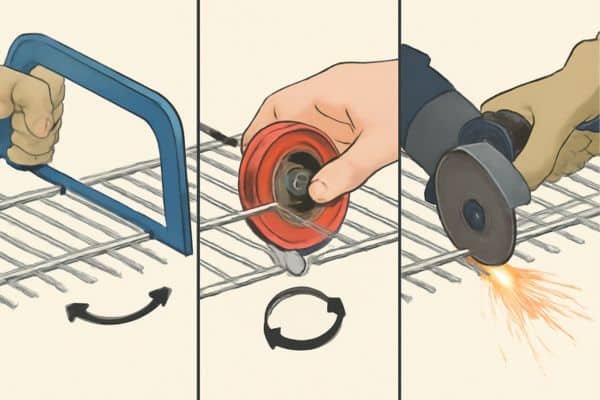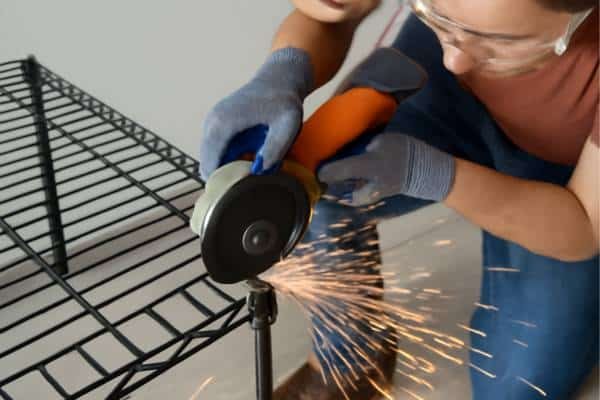Cutting wire shelving without a bolt cutter might sound tricky at first, but I promise it’s easier than it seems. I was once in your shoes, Staring at a shelf I wanted to customise but not having the right tools. Then, I realised that bolt cutters aren’t the only option. With the right approach and a few simple tools, Cutting wire shelving can be quick and even fun! Let me show you how to cut wire shelving without a bolt cutter without the stress and hassle.
Understanding Wire Shelving
Wire shelving is a simple and effective storage solution. It is made of metal arranged in a grid. You can find it in closets, Kitchens, garages, And storage rooms. It’s popular because it is easy to install and saves space.
Wire shelves are also very flexible. You can cut them to fit specific spaces. Whether it’s for a small corner or to adjust the height, Knowing how to cut shelves is useful. Customising your shelving makes your space more organised.
You don’t need big, expensive tools for this job. With the right tools, Cut wire shelving without a bolt cutter is easy. You can handle the task with tools you may already have at home.
Tools You’ll Need (Aside from Bolt Cutters)

Cutting shelving doesn’t require bolt cutters. Other tools can work just as well or even better. Let’s look at a few options.
- Hacksaw
A hacksaw is simple and affordable. It’s perfect for small, light jobs. Cutting might take a bit more time, but it’s effective for DIYers. - Pipe Cutters
Pipe cutters make clean, precise cuts. They work best for thinner wire. Just twist and tighten for a smooth break. However, they’re not ideal for thicker wires. - Angle Grinder
Angle grinders are fast and powerful. They get the job done quickly. But be careful—they create sparks, so safety gear is a must. - Wire Cutters
Wire cutters are great for cutting thin wire. They are quick and easy to use. But for heavy-duty, they won’t be strong enough.
01. Gather Your Tools
Before starting, Make sure you have the right tool. Thicker wire might need an angle grinder, while a hacksaw or pipe cutter works well for thinner wire. Choose your tool based on the wire’s thickness to ensure an easier cut.
02. Measure and Mark

Use a measuring tape and a marker to mark where you want to cut. Double-check your measurements to avoid mistakes. Clear markings make the cutting process easier and more accurate.
03. Prepare Your Workspace
Set up in a well-ventilated area, preferably outside or near an open window. Secure the shelving with clamps to hold it steady while you work. A stable workspace helps ensure precise cuts and keeps everything in place.
04. Cut the Wire Shelving

Now, it’s time to cut!
- For a hacksaw, Use a back-and-forth motion. Make sure to apply consistent pressure for a clean cut.
- For pipe cutters, Rotate the cutter around the wire until it creates a smooth, clean break.
- For an angle grinder, Be sure to wear safety gear, as sparks will fly. Move slowly to control the cut and avoid mistakes.
05. Smooth the Edges
After cutting, smooth any sharp edges with sandpaper or a metal file. This step is essential to prevent injury and protect your other items from getting scratched or damaged. Take your time to make sure the edges are smooth to the touch to cut wire shelving without a bolt cutter.
Practical Tips for Getting Perfect Cuts Every Time

Tip 1: Always measure twice, cut once
This old saying is key for working with wire shelving, especially for organising your home. Double-check your measurements before making any cuts. A small mistake in measurement can lead to a big issue later, so it’s worth taking the time to measure carefully, particularly while designing and style living room shelves for optimal space use.
Tip 2: Use a marker that stands out against the wire
To avoid mistakes, Use a marker that contrasts well. Bright colours like red or yellow make your markings easy to see. This will help you follow your cut line accurately.
Tip 3: When using an angle grinder, wear safety gear
An angle grinder is powerful, But it also creates sparks and debris. Always wear protective gear like goggles, gloves, And a long-sleeved shirt to shield yourself from any flying bits. Safety first!
Tip 4: If cutting thicker shelves, be patient and cut slowly
Cutting thicker wire requires more time and care. Rushing the process can result in jagged edges or a messy cut. Take it slow, and let the tool do the work to get a clean, smooth edge.
Will Home Depot Cut Wire Shelving for You?
Home Depot offers custom cutting for some products, Including wire shelving. This service is handy if you don’t have the tools or confidence to cut it yourself. Be sure to check with your local store to see if they can cut the type of shelving you need.
In some cases, Doing it yourself might be better. Cutting your shelving is cheaper and faster. Plus, It gives you more control over the results.
However, using Home Depot’s service comes with costs. They may charge a small fee per cut. Also, it might take a bit of time, especially if they are busy.
How to Cut Metal Shelving (Tips for Similar Projects)

Cutting metal shelving is similar. Both require careful measurements and steady hands. The main difference is that metal shelves are thicker and tougher.
For metal, you’ll need stronger tools. Hacksaws and pipe cutters can still work, but an angle grinder or jigsaw might be needed for thicker metal. These tools help cut through metal more easily.
Always wear safety gear. Metal can produce sparks and sharp edges, so protect your eyes and hands.
Conclusion
With the right tools, Cutting wire shelving without bolt cutters is simple and accessible. You don’t need heavy-duty equipment to get the job done. Whether you choose a hacksaw, Pipe cutters, Or an angle grinder, You can easily customise your shelving to fit your space.
DIY projects like this are not only satisfying but also offer personalised solutions for home organisation. The sense of accomplishment from customising your shelving to fit your needs is unbeatable. So grab your tools, Measure carefully, and enjoy the process!

